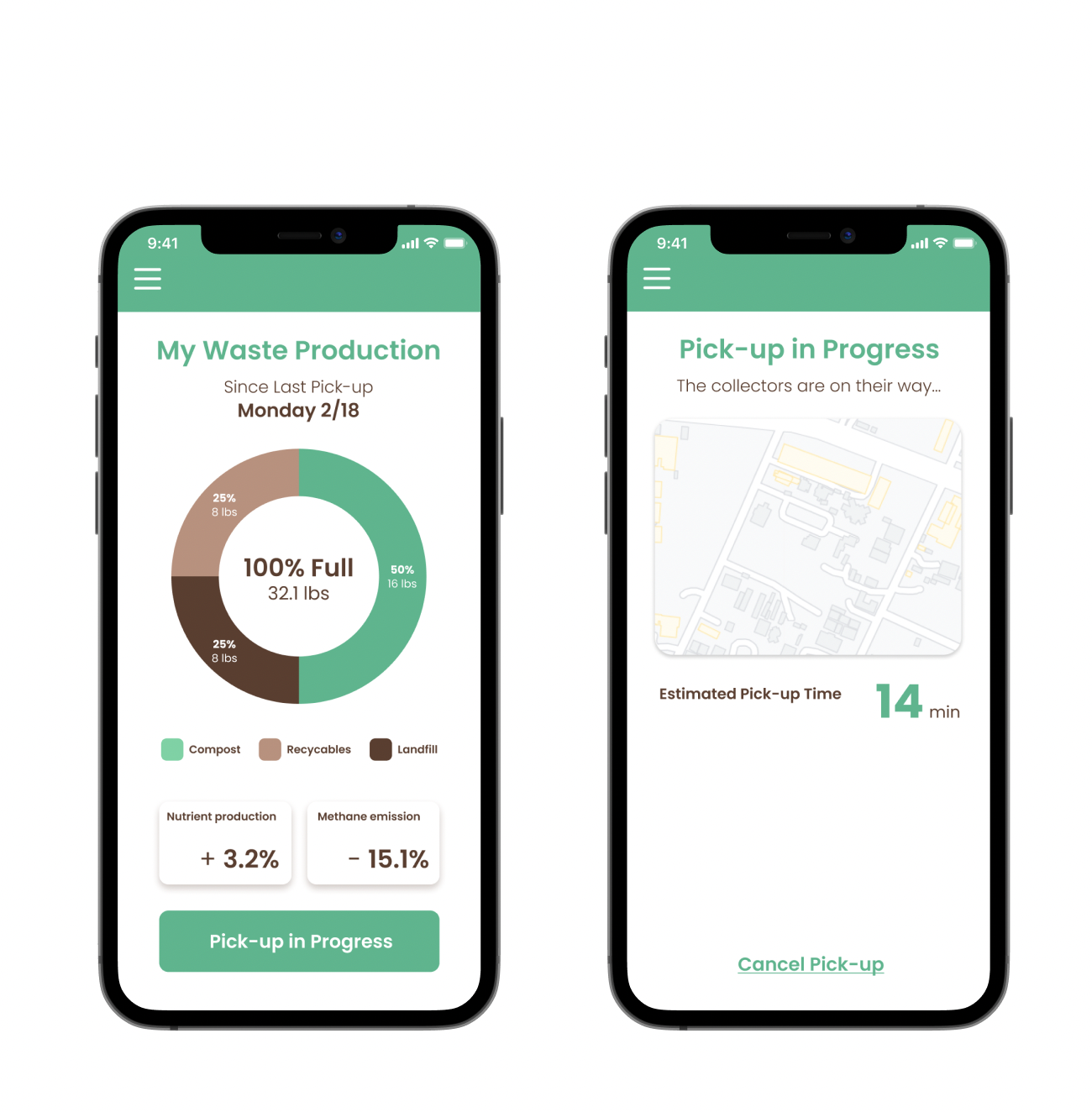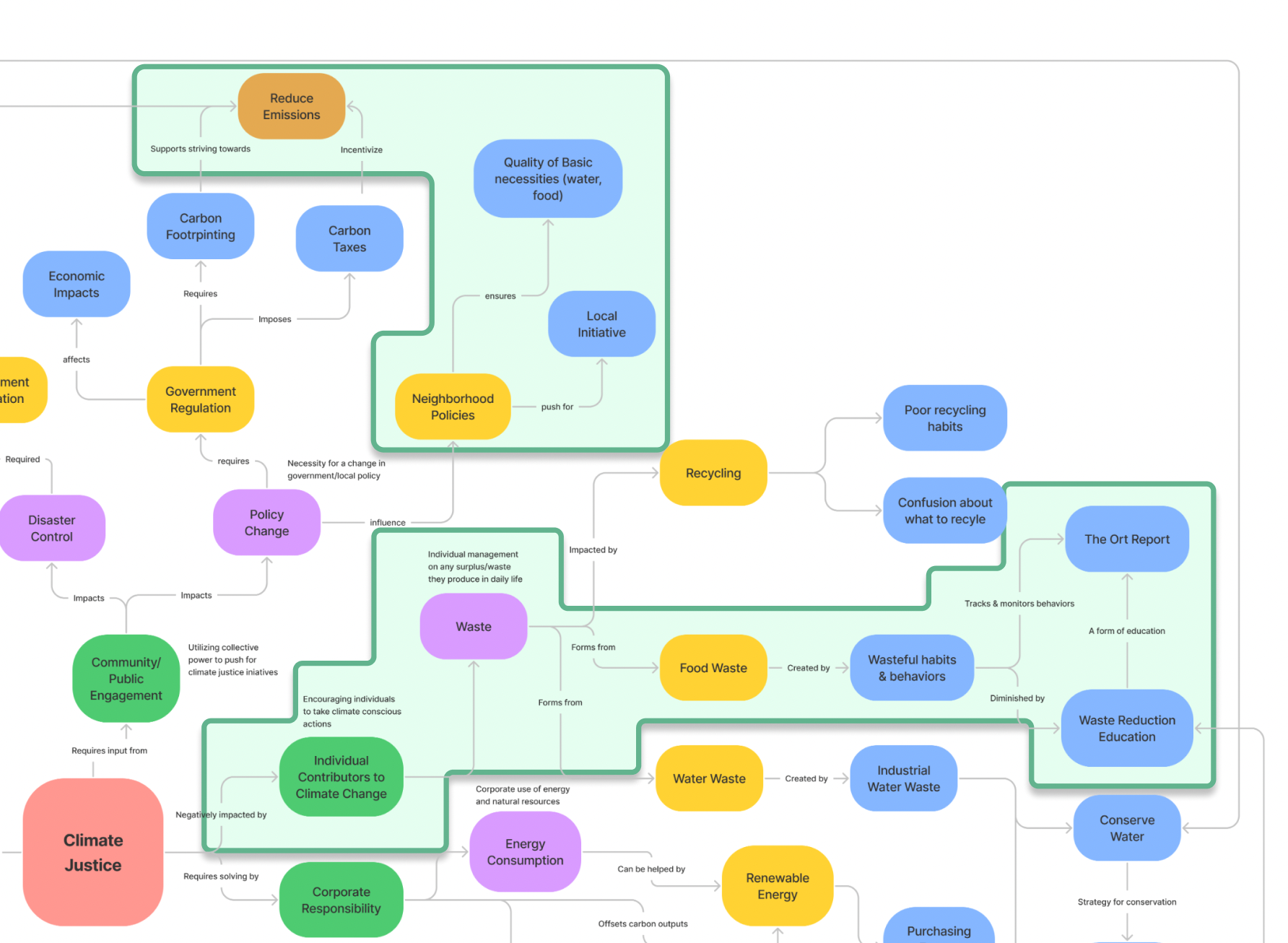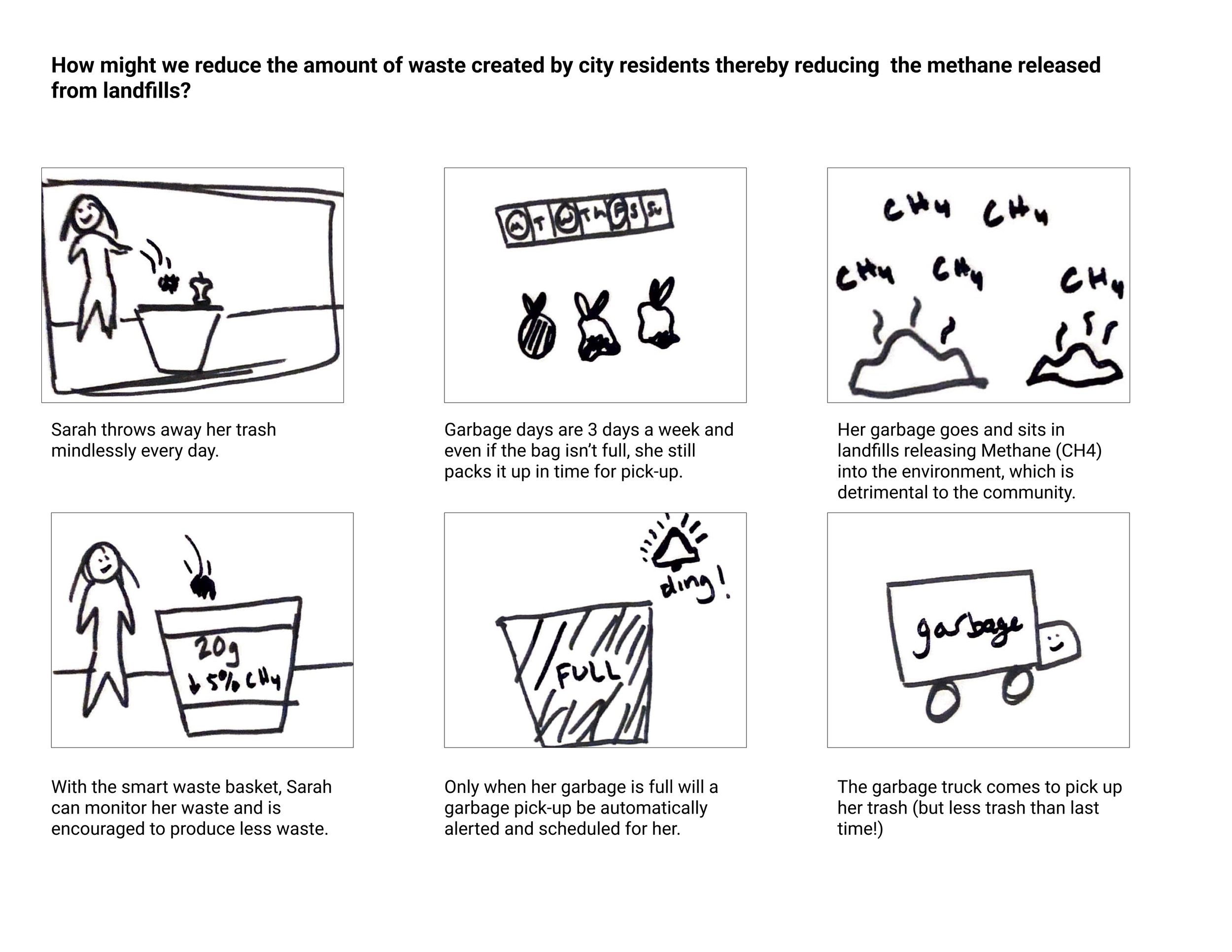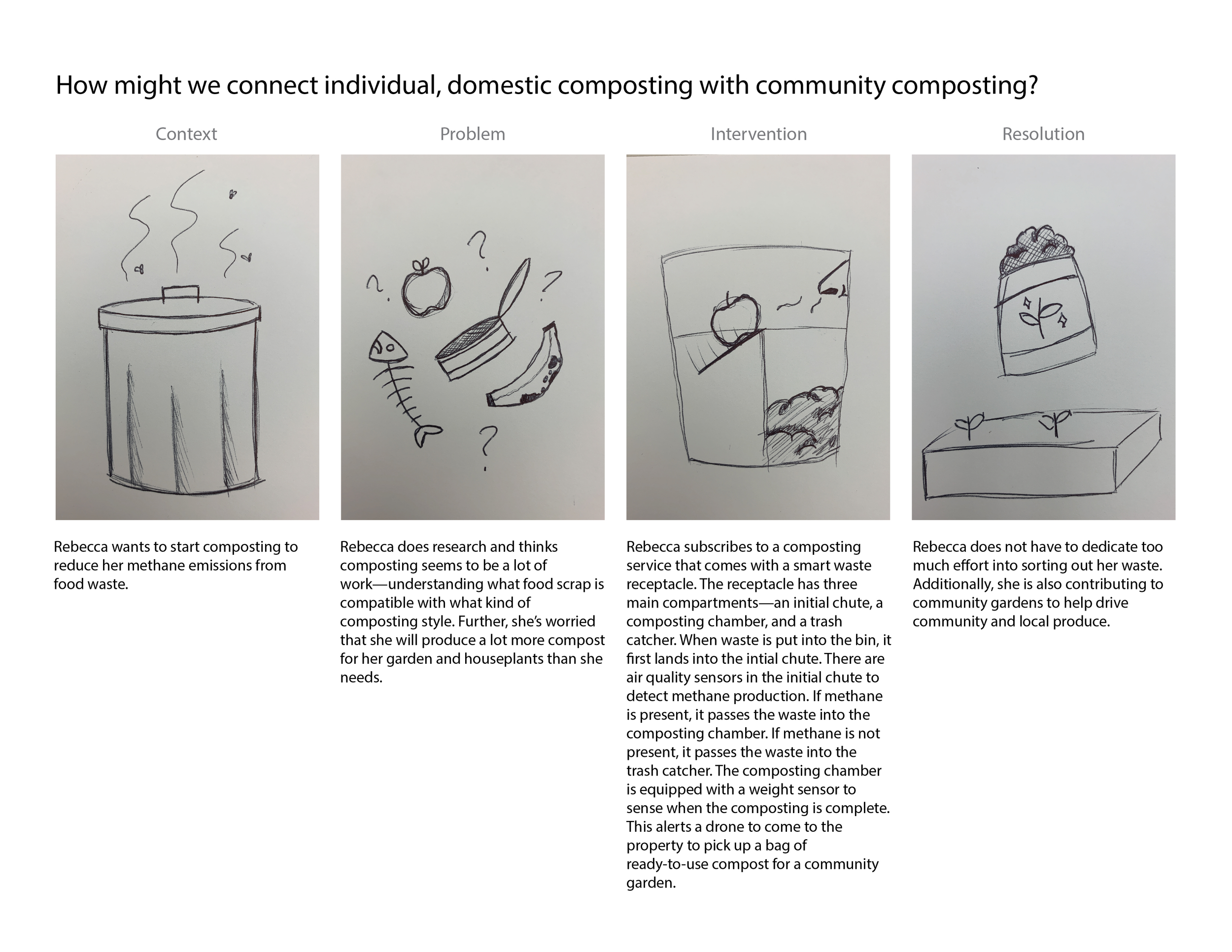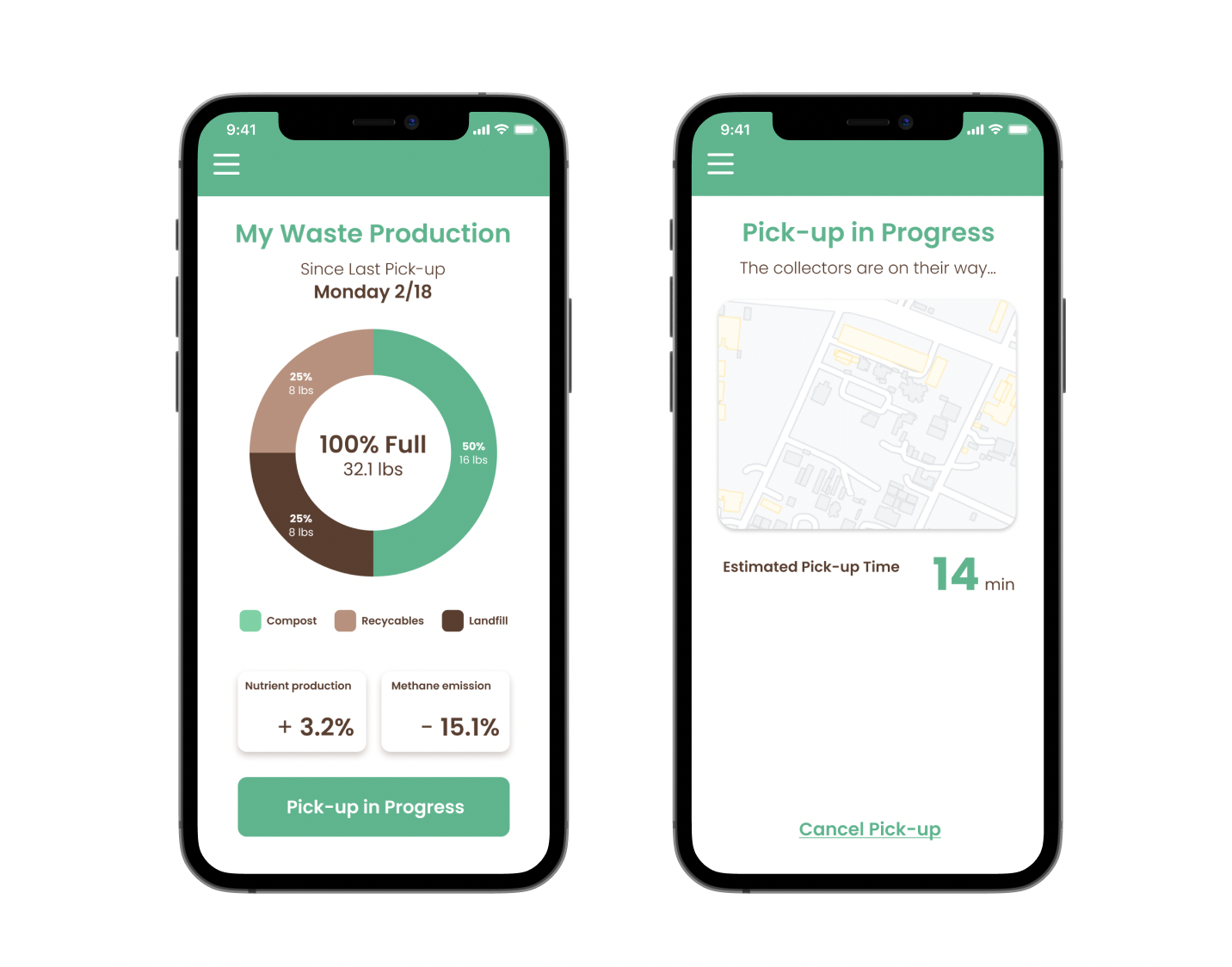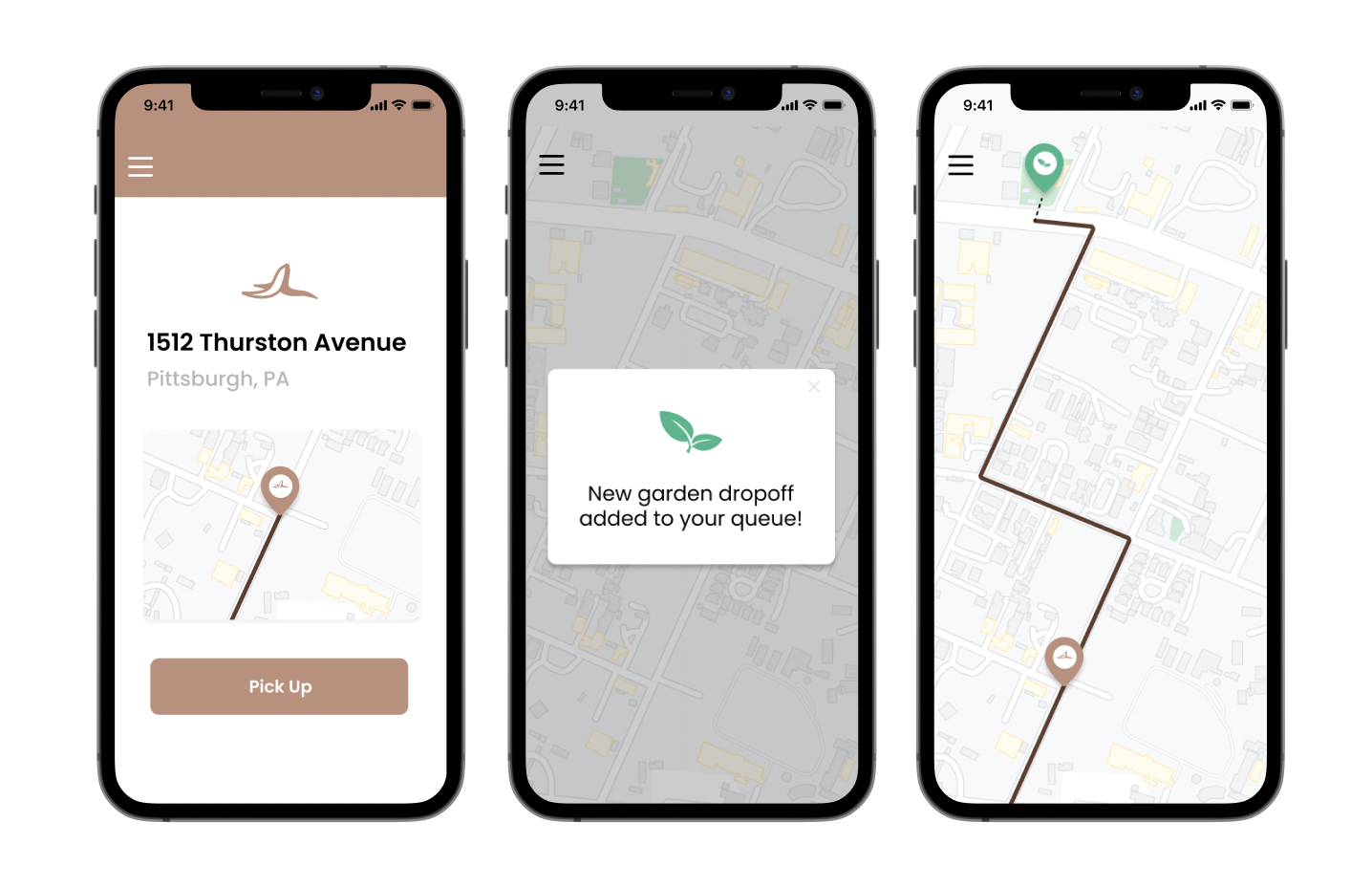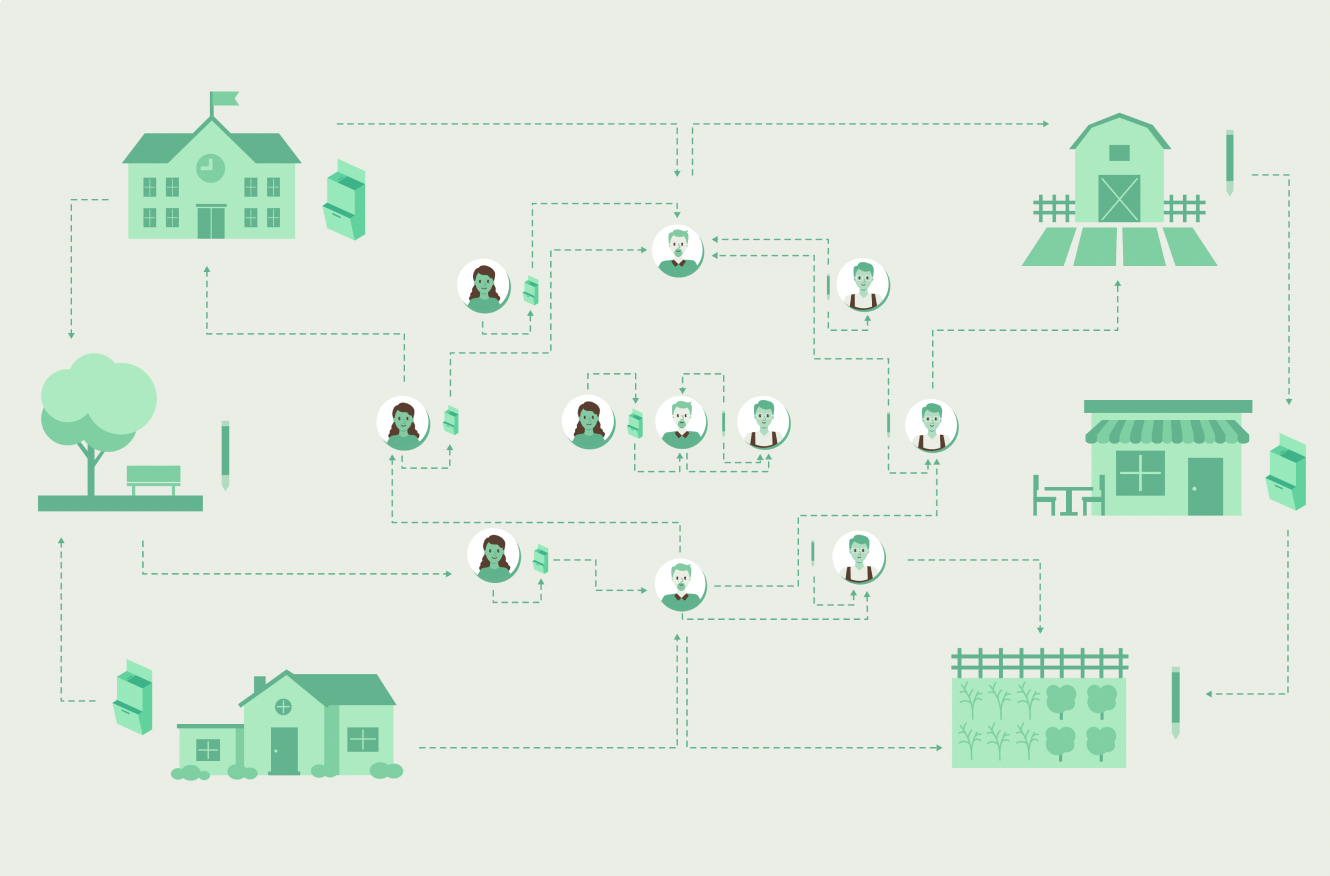Compost-It
Leveraging IoT to promote community-wide composting
Civic Engagement | IoT | Service Design | Systems Design| UX Design
In a year, 40 million tons of food waste are thrown into landfills in the United States. 115 million metric tons of greenhouse gases from food waste contribute to climate change. If food waste were a country, it would be the 3rd largest contributor of greenhouse gases. So what can we do to help mitigate food waste?
Compost-It reduces food waste and benefits the community by leveraging IoT.
The team
Mashia Mazumder, UX Researcher
Led concept mapping and provided narration for the final pitch video.
Kristian Pham, Visual and Product Designer
Created storyboards for research, visuals (UI and illustrations), and primary animator for the pitch video.
Sophia Timko, UX Researcher
Led concept mapping & user testing, and assisted in animating the pitch video.
Sihan Wu, UX Designer
Primary illustrator and assisted in animation.
Andrea Zhu — Industrial Designer
Created 3D renderings of the IoT system.
My role and contributions
For Compost-It, I maintained the role of a product designer with an emphasis on visual design. I designed some initial storyboards to do user need-finding and the system prototype. After our ideations, I established the visual identity of the project and collaborated on the illustrations used in the pitch video. To wrap up the project, I wrote the storyboard for our pitch video and animated the first third of it.
Narrowing within a broad domain
When selecting a domain for civic engagement, the group landed on three main areas we were passionate about: responding to emergencies, food insecurity, and climate change. Starting with the area of climate justice, we created a concept map to brainstorm focus areas.
After the concept map was completed, we referenced our other domains to find overlap. This led us to focus on food waste and greenhouse gas emissions from food waste.
Storyboarding potential solutions
Creating a system prototype
In order to create a network to be utilized by a community, we needed to outline the key stakeholders that would use this system and how they would interact with one another through the IoT components. The three key stakeholders in this system are: an urban dweller, a waste collector, and a community gardener.
In this diagram, the urban dweller uses the IoT Waste Receptacle to track overall waste and categories of waste—recyclables, compostables, and landfill waste. The IoT Waste Receptacle’s weight sensor triggers the waste collector to come and pick up the compost. Then, the waste collector is notified where to bring the compost fertilizer through an IoT Garden Stake, which is owned by the community gardener.
Creating the IoT Components
The system prototype informs which IoT components needed to be made. Following the iterative process, we started off with low-fi prototypes of the IoT Waste Receptacle and the IoT Garden Stake.
Once the low-fi prototypes were conceptualized, we moved to create higher fidelity versions. Further, we also investigated how to use smartphones to make the system easily managed.
Designing unique companion app screens
When creating a system, we needed to take into account how users could potentially track their waste production. This led to the creation of a smartphone application. Given our three key stakeholders, we created unique views for them.
Urban Dweller — Tracks overall waste production and the categories of waste.
Community Gardener — Monitors soil levels and requests compost fertilizer when needed.
Waste Professional — Travels from compost pick-up sites to community gardens that need fertilizer.
Pitching the system
While designing the system, we crafted a narrative for the importance of implementing such a system as this one. The narrative focuses on following the journey of waste and how it travels across the community.
Next steps
If we had more time, we would’ve like to continue to iterate and refine Compost-it by:
focusing on the scalability of the network
utilizing sensors to make the waste receptacle auto organizing
building out the app to be more robust and have more capabilities


